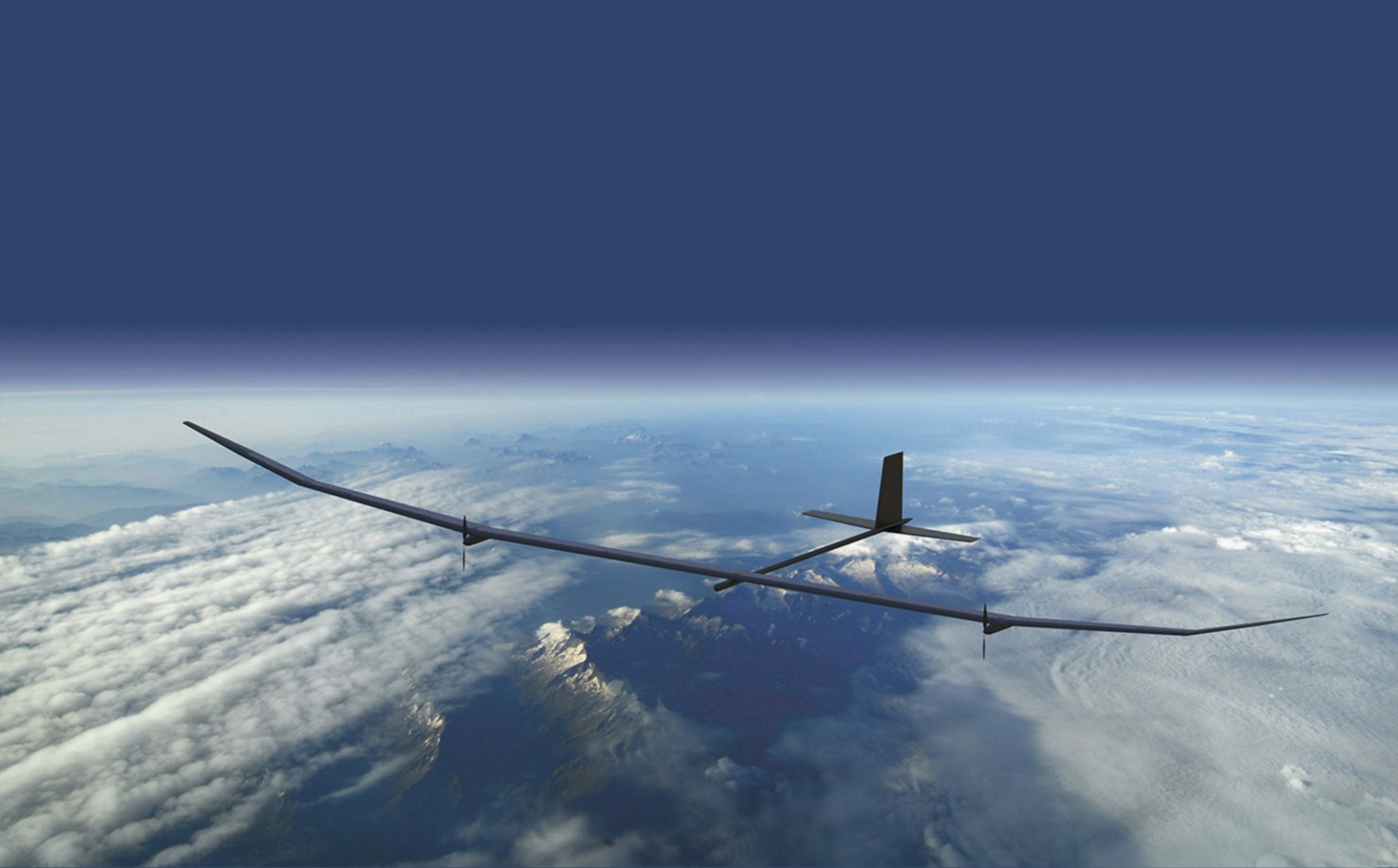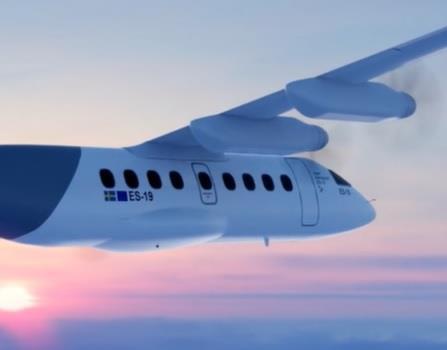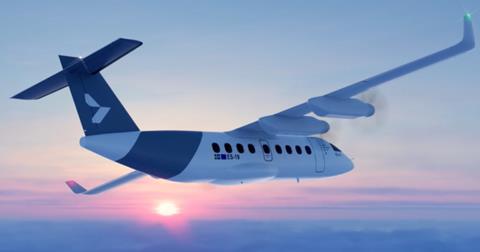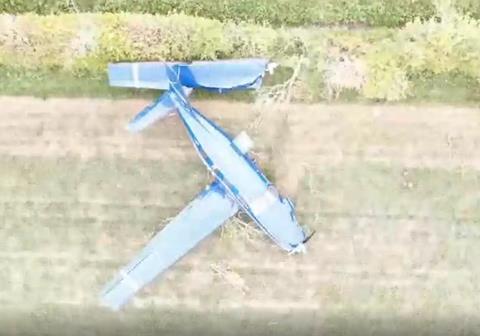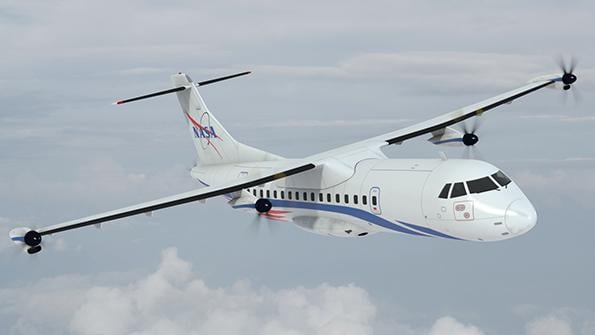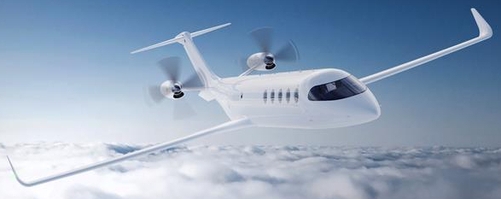Ask the editors: Longer-haul electric aircraft will depend on better energy storage, higher power densities and greater efficiencies.

aviationweek.com
What Are The Electric-Propulsion Challenges In Commercial Aviation?
Graham Warwick Thierry Dubois April 30, 2021
Credit: NASA
What are the main challenges to using electric propulsion in commercial aviation?
Graham Warwick, Aviation Week’s Executive Editor, Technology, and France Bureau Chief Thierry Dubois team up to answer:
Challenges to the use of electric propulsion in commercial aviation are many and range from the batteries and motors to the wiring and cooling. But from the beginnings in automotive technology, progress is taking place in tailoring electric drive trains to aerospace applications.
The biggest challenge is the low energy density of batteries. Jet fuel has an energy density of about 12,000 Wh/kg whereas commercially available lithium-ion batteries have an energy density at the cell level of about 250 Wh/kg. Energy density at the pack level, including the weight penalty for thermal-runaway containment and other safety features, is typically 20% lower.
Although that might seem an impossible gap to bridge, electric-propulsion pioneers believe that they can develop commercially viable small, short-range aircraft using available batteries. “Small” refers to aircraft with up to 19 seats, and “short-range” pertains to distances less than 250 mi.—enough range for many regional routes, the pioneers argue.
Developers are not ignoring the battery challenge; instead, they are planning to make the most of an electric motor’s better efficiency compared with an internal combustion engine. They are also betting on technological advancements.
Battery efficiency is improving at about 5-8% a year. NASA conservatively projects that batteries with 350-Wh/kg energy density at the pack level could be commercially ready by 2030 and would enable all-electric, short-range, 30-seat aircraft. “Commercially ready” batteries would consist of large pack sizes with adequate charge times and cycle lives.
Pack-level energy densities of 400-500 Wh/kg are viewed as a sweet spot that would open up potential applications in hybrid-electric aircraft ranging from 50-seat regionals to 150-seat single-aisles. NASA projects that 400-Wh/kg batteries could be commercially ready by 2035 but believes that exceeding 400 Wh/kg will require investment in new battery technologies beyond that currently anticipated..
Another way to store energy for electric motors is to use hydrogen. Stored in liquid form at a cryogenic temperature of -253C (-423F), hydrogen is lighter than conventional Jet-A1 kerosene for a given amount of energy. The process of converting it to electricity in a fuel cell is well known.
So could hydrogen provide a better way than batteries to store energy in an electric aircraft? The jury is still out because challenges remain. Liquid hydrogen requires larger tanks because of its low density compared with jet fuel. And the scalability of fuel cells to the megawatt levels that commercial aircraft require has yet to be proved.
Credit: NASA
Airbus, which for 10 months has been at the forefront of hydrogen technology in aviation, is considering hybrid layouts. Some of the hydrogen on board would be burned in a gas turbine (a less efficient use of hydrogen, however), and the other portion could be converted into electricity in fuel cells.
During the flight phases requiring maximum power, such as takeoff and climb, both the turbine and an electric motor would drive the propeller or fan. In cruise flight, the propeller or fan would rely on the turbine only, which would be optimized for that phase. The electric part of the propulsion system would thus make a key contribution to an overall more efficient configuration.
Besides energy storage, aircraft propulsion needs advances in the power densities and efficiencies of electric motors and power electronics beyond automotive levels. High power densities will reduce weight and volume, while higher efficiencies will reduce waste heat and the weight of the necessary cooling systems. In a megawatt-class aircraft propulsion system, even losses as low as 1-2% require the removal of kilowatts of waste heat.
Electrified aircraft propulsion also requires higher voltages to minimize the size and weight of the power-distribution system. Watts equal volts times amps, so at high power levels, increasing the voltage lowers the current and reduces the size of the aircraft cabling needed to distribute the power.
Aircraft have traditionally used 28 volts for power distribution, but newer aircraft are beginning to use 270 volts. The first all-electric aircraft are using voltages of up to about 500; however, designers who are looking at megawatt-class electrified-propulsion systems for single-aisle airliners are talking about kilovolts—up to 3,000 volts.
But such high voltages in the reduced air pressure at the cruising altitudes of commercial aircraft could lead to a potentially hazardous phenomenon known as partial discharge. So new cabling designs and insulation systems will have to be developed to avoid hazards such as partial and corona discharge.
In the long term, one potential avenue—which Airbus is exploring—is to use superconducting technology in electrical machines and distribution cables. Superconductors are materials that have no electrical resistance when cooled to cryogenic temperatures, thereby increasing efficiency and reducing weight.
Using superconducting motors and cables would increase power density and reduce waste heat, but in most all-electric or hybrid-electric aircraft that would require the addition of complex, heavy cryocoolers. Hydrogen-powered aircraft, however, could use their cryogenic liquid-hydrogen fuel to supercool the systems.
Looked at together, there are a discouraging number of challenges to using electric propulsion in commercial aircraft. But as aerospace engineering begins to address the problems, we are seeing the technologies advance rapidly from their starting point in the automotive market.
Electric propulsion may forever be restricted to short-haul routes, leaving the medium- and long-haul markets to other approaches such as synthetic fuels, but even at that level, the technology appears to have the potential to change the air transport industry.
Graham Warwick
Graham leads Aviation Week's coverage of technology, focusing on engineering and technology across the aerospace industry, with a special focus on identifying technologies of strategic importance to aviation, aerospace and defense.
Thierry Dubois
Thierry Dubois covers French aerospace for Aviation Week & Space Technology.



